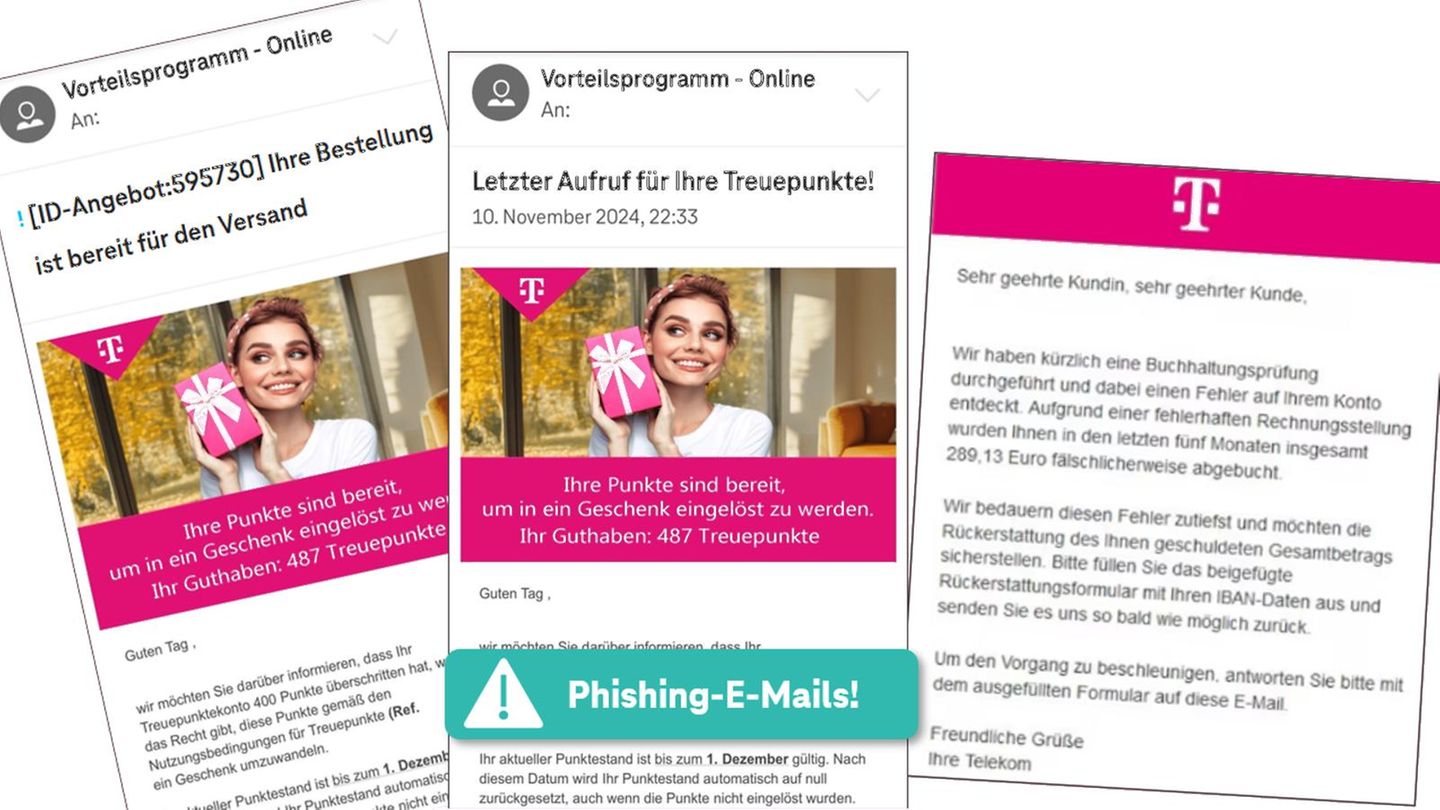consumer
Telekom warns of fraud: millions of customers affected
Copy the current link
Telekom customers under attack: Criminals are trying to get personal data using three perfidious scams. Which mistakes you absolutely have to avoid
Deutsche Telekom warns: Emails are currently being sent in the name of the company asking Telekom customers to redeem their loyalty points from the “Magenta Moments” program.
These are fake emails that do not come from Telekom, but from fraudsters. These so-called phishing emails attempt to obtain personal data.
At the same time, another phishing attempt is underway that is particularly perfidious: consumers receive a message warning them about fake Telekom emails.
For protection, a so-called “Telekom Advanced Email Filter” is recommended for 1.95 euros, which the company allegedly offers together with the software company “Avast”.
These messages also come from fraudsters, according to Telekom. Under no circumstances should you respond to emails of this type or click on any links contained therein. The scam could be recognized quite easily.
How do I recognize phishing emails from Telekom?
According to Telekom, you can recognize a fake email that, for example, asks you to redeem loyalty points or provide data via a link, by the following features:
- No salutation
- No mention of contract-relevant data such as the customer number
- No verification seal on the email
- “Importance high” sign – very untypical for Telekom emails
- Unknown sender
- Signed by Marco Holzwart for Ralf Hoßbach
If you have such an email in your inbox, Telekom advises you to take the following steps:
- Report email as spam
- Under no circumstances should you click on the link in the email
- Once you have opened the link, do not enter any personal information
Another scam
Criminals are also trying to trick Telekom customers with another scam. They inform customers that there was an error in an “accounting audit” and that they had been debited too much money in the last few months, often in the three-digit range.
To fix this error, the scammers ask customers to fill out a “refund form” where they are asked to provide their bank details. Afterwards, customers are supposed to return the form directly in response to the fraudulent email to speed up the process.
According to Telekom, this is also a phishing attempt that should be reported.
lpb
Source: Stern




